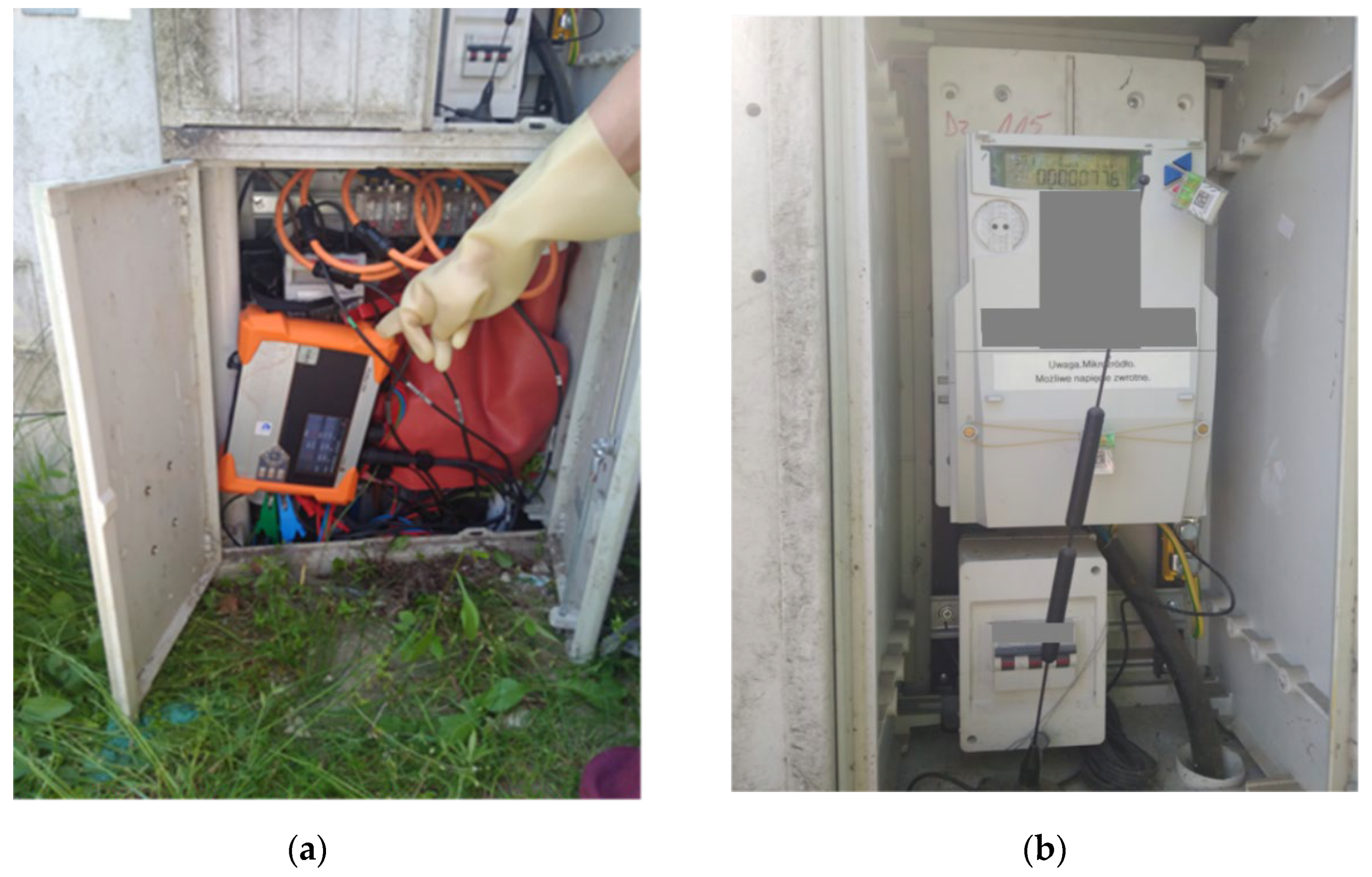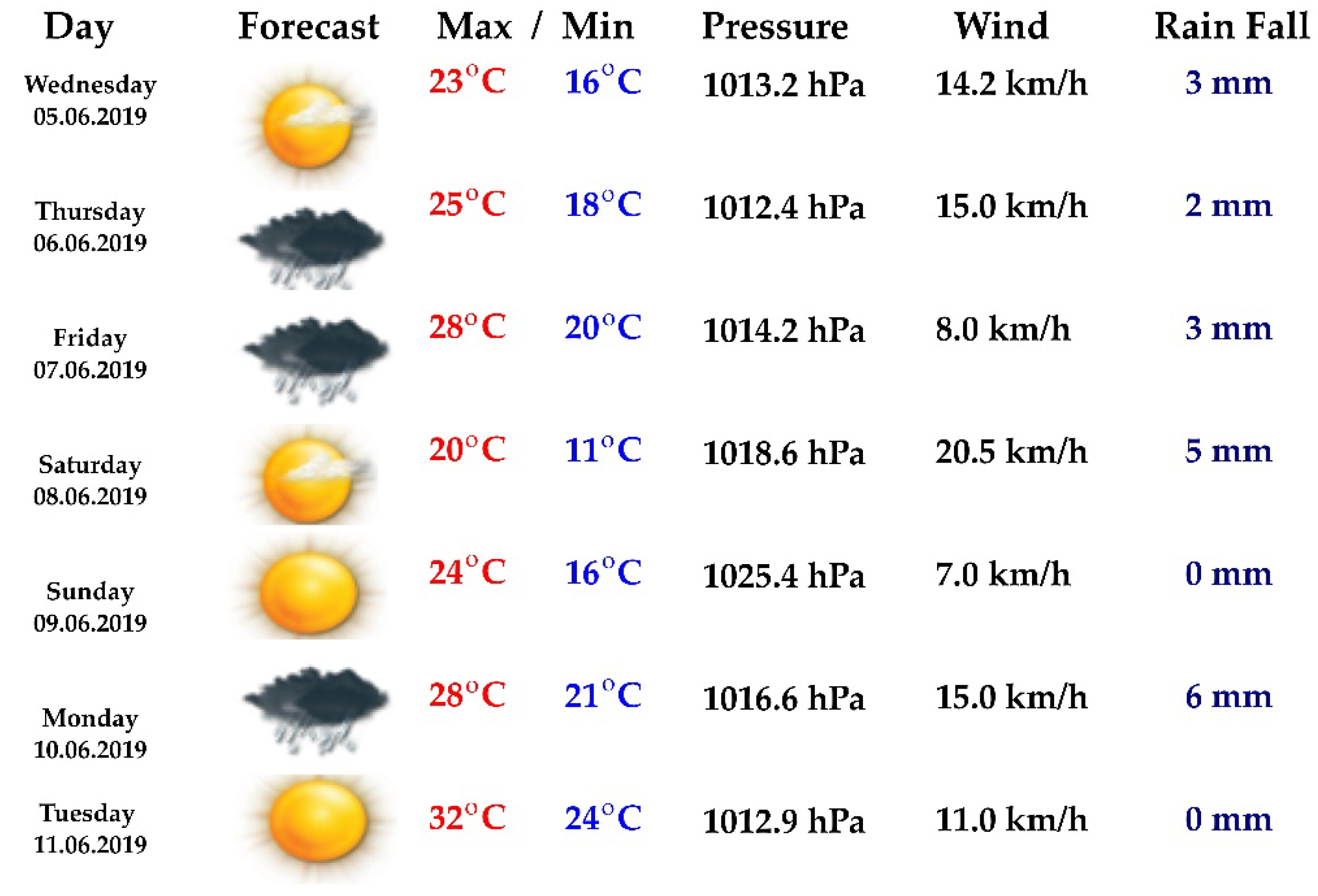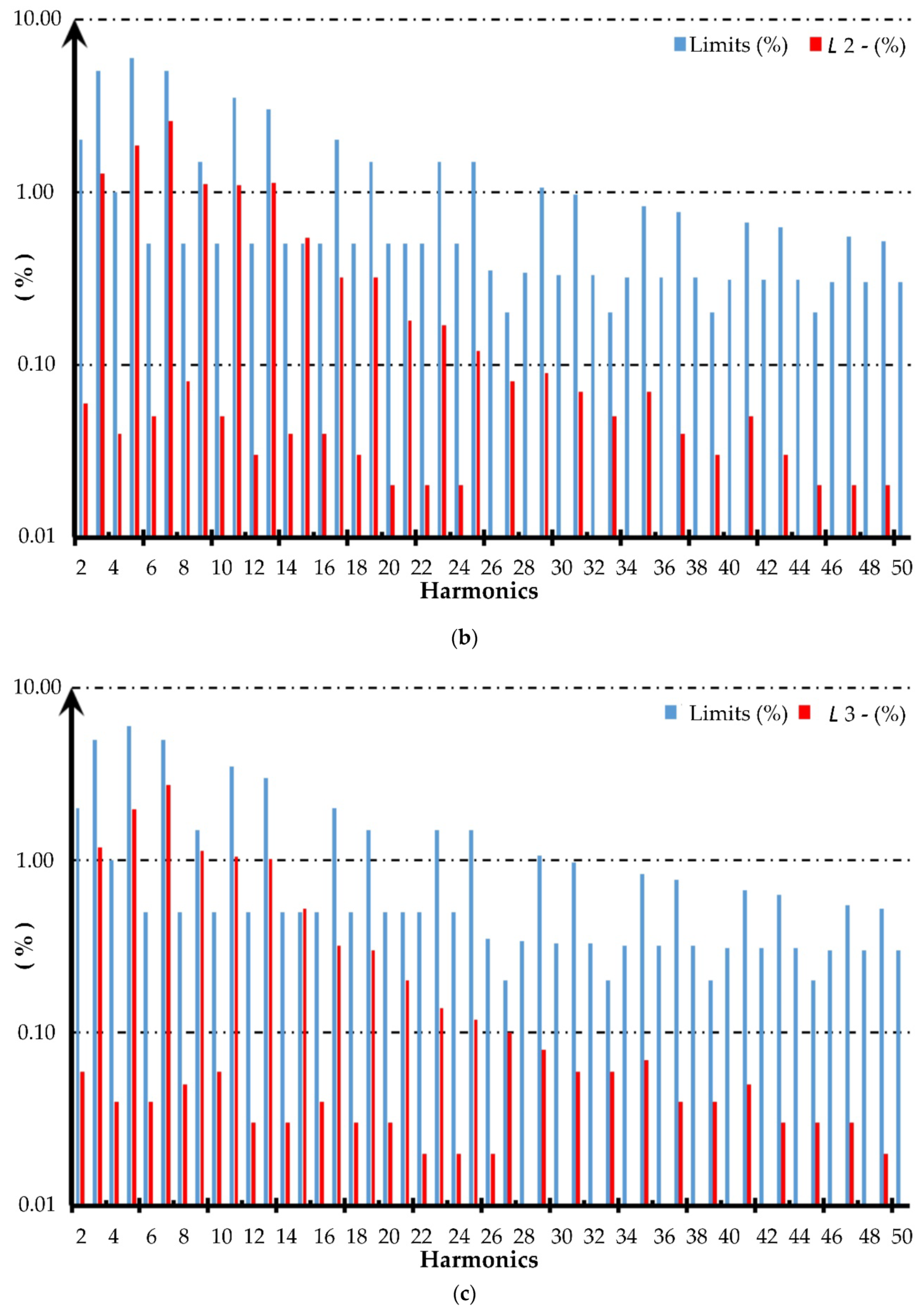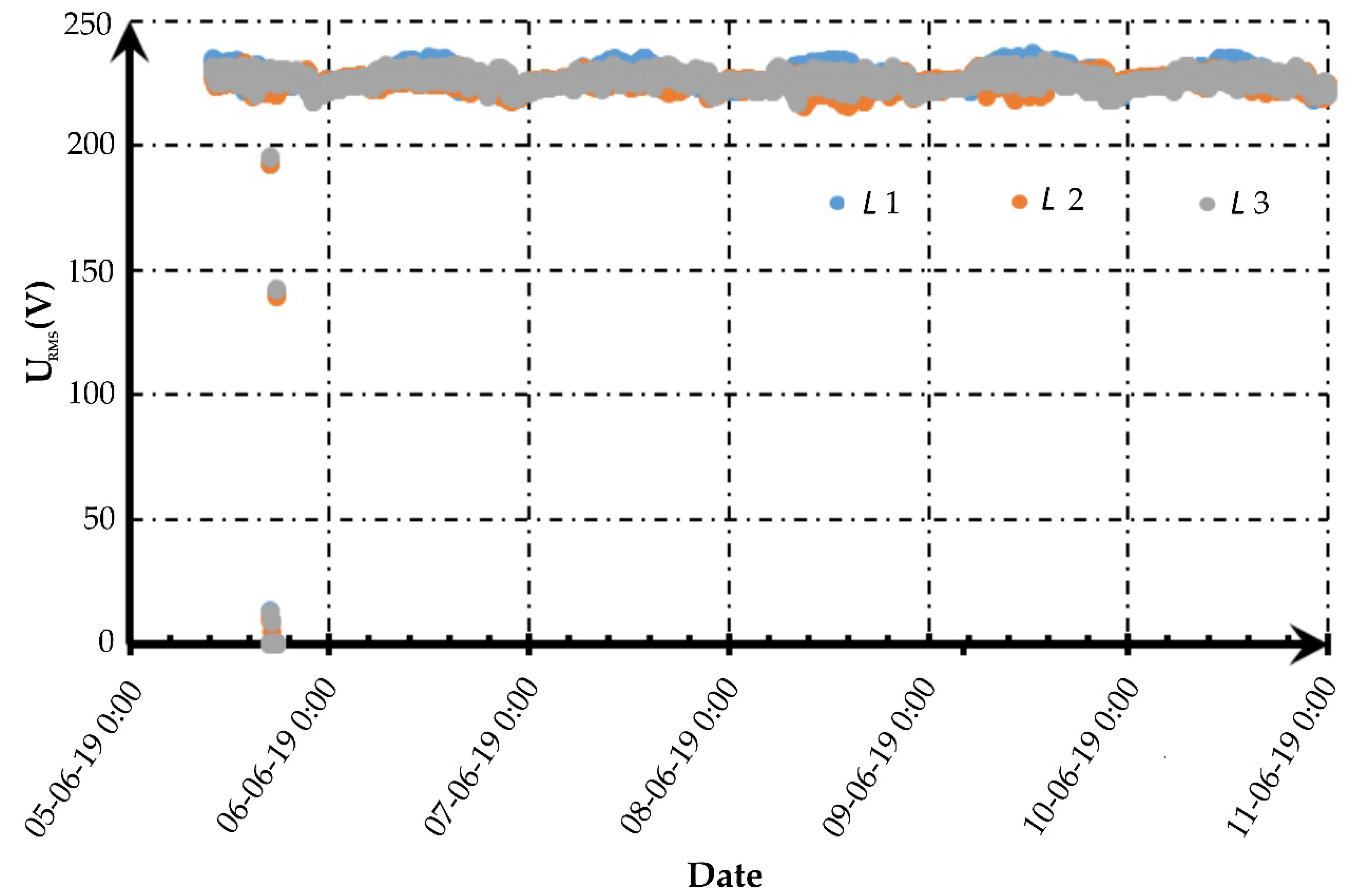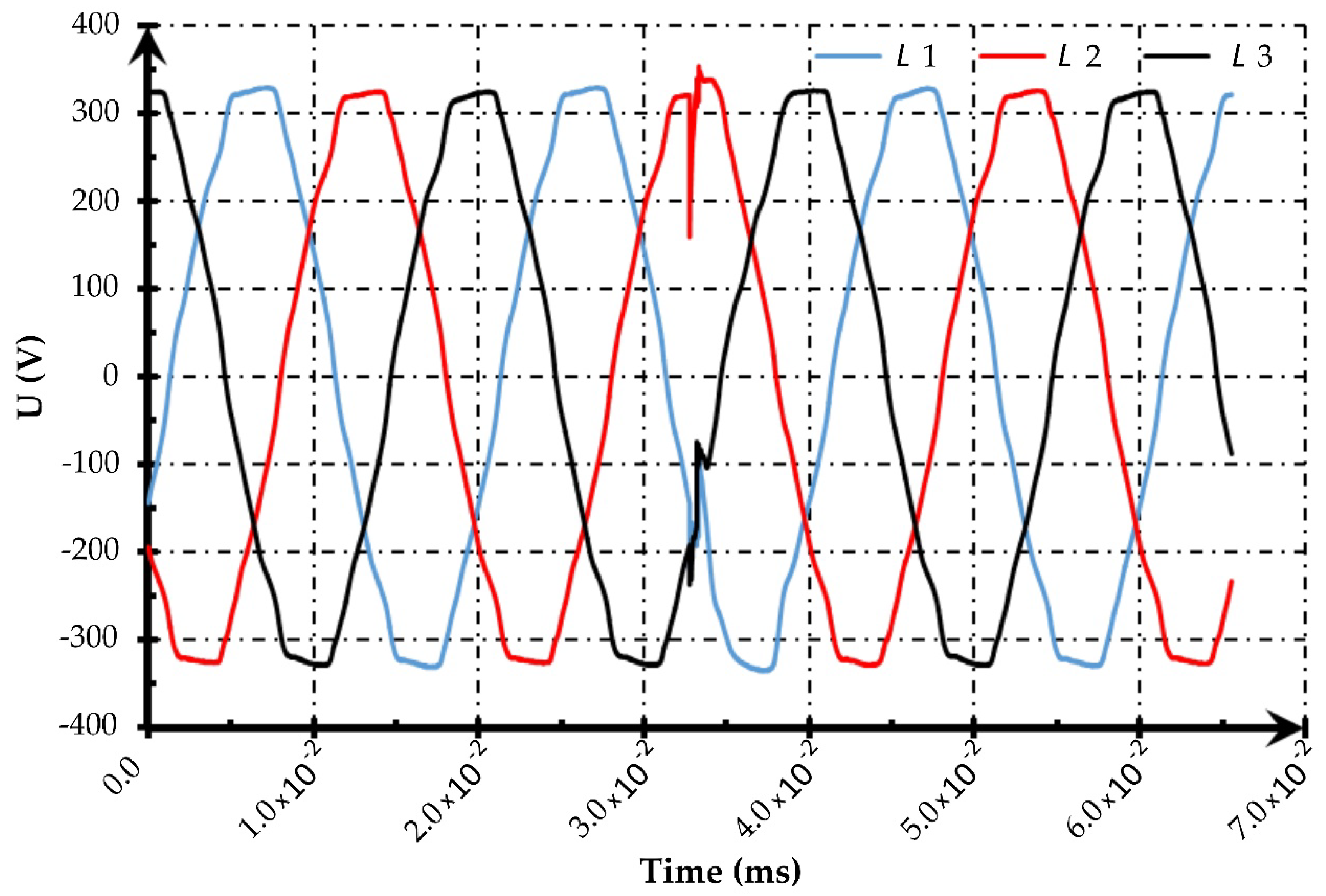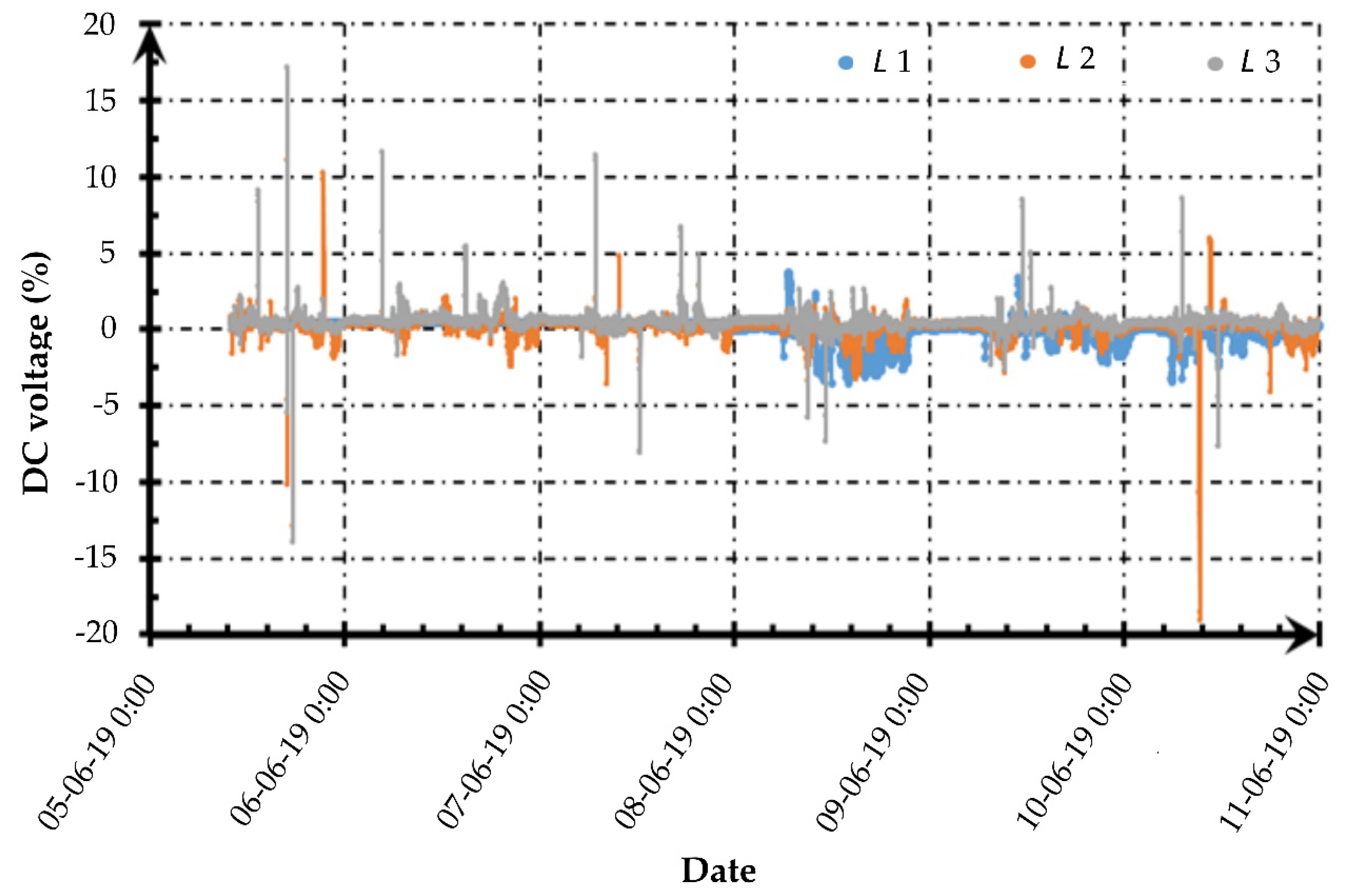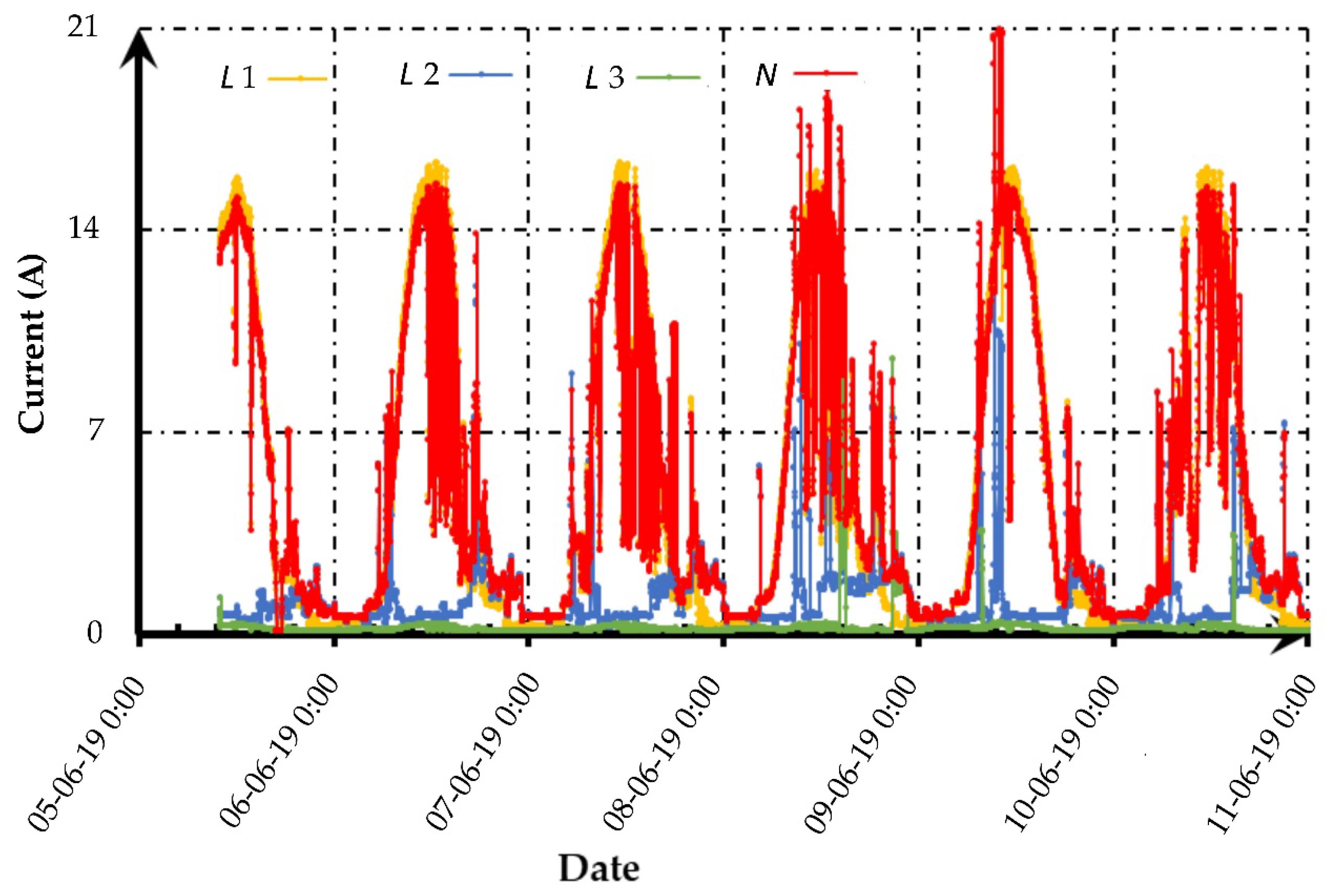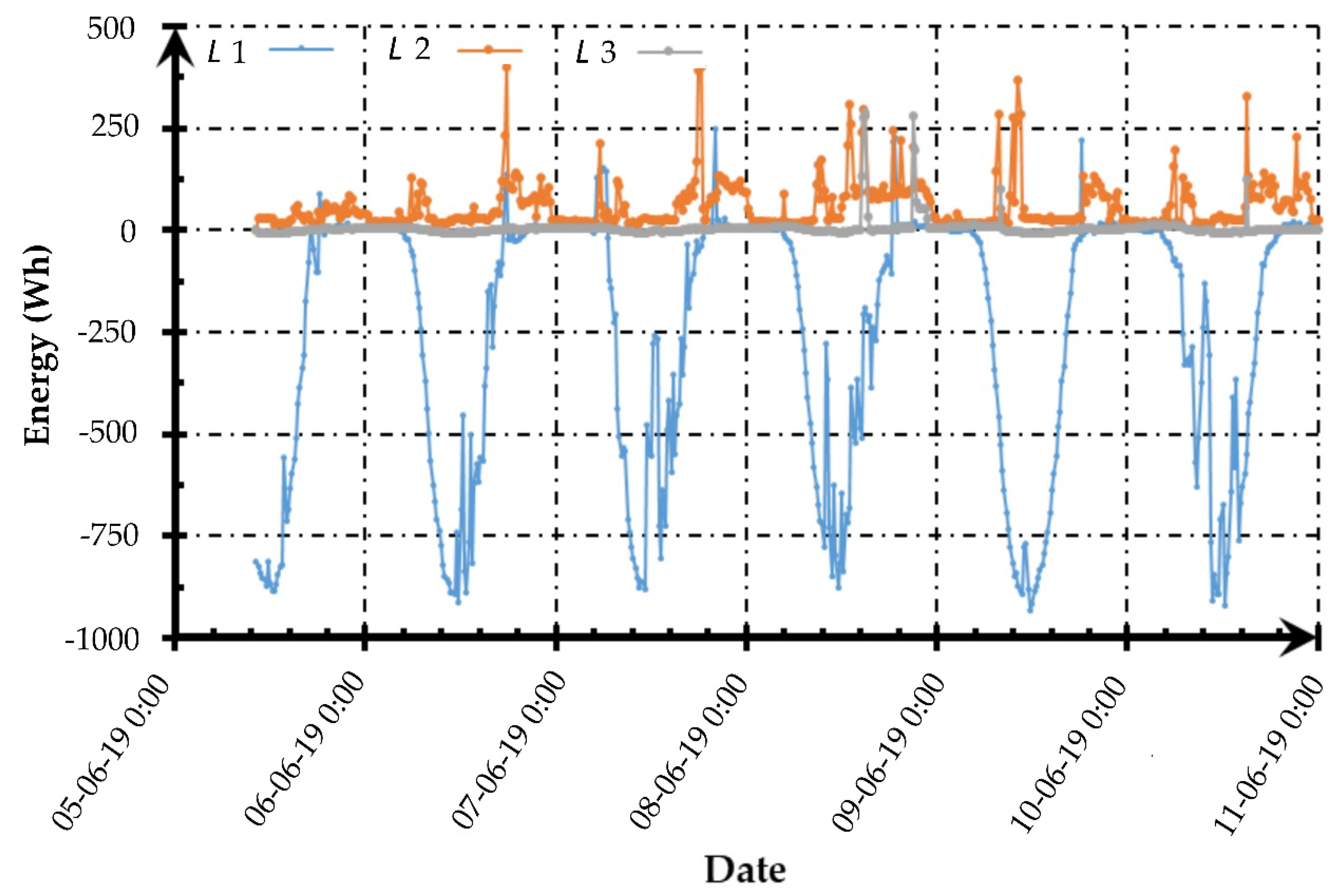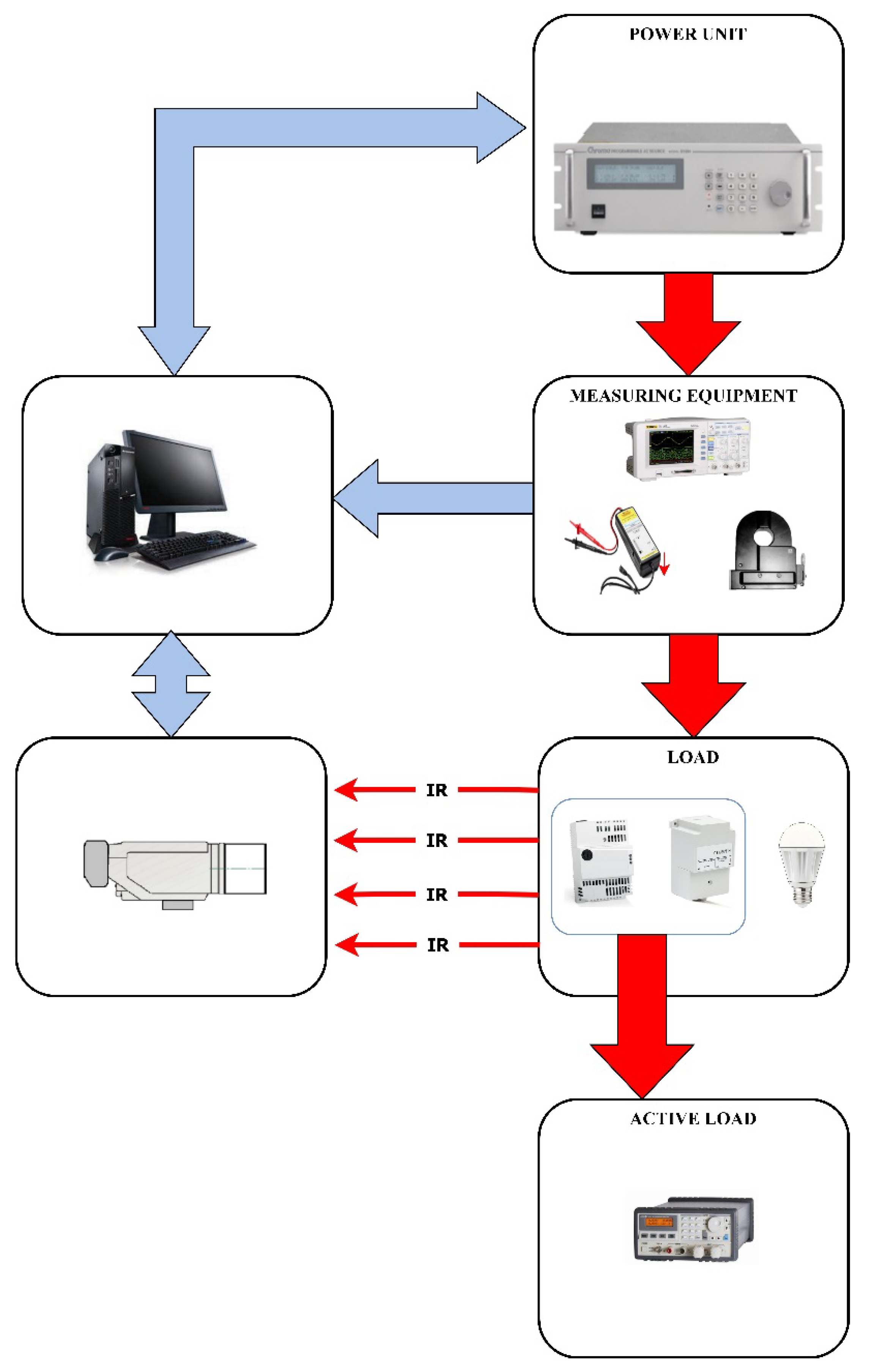Power electronic devices have recently recorded a significant increase in domestic appliances, which is mostly due to the development and wide use of renewable energy installations. Their popularity is largely related to the necessity to convert the obtained energy into the currently used form. It is assumed that electricity acquired with the use of the broadly understood solar technology currently reaches about 600 GW installed capacity [
1], which equals to about 30% of energy obtained from renewable sources. Solar installations evolve to a various extent all over the world. In some countries, significant saturation of their occurrence in supply networks was achieved. Solar installations are currently being developed mainly based on systems that use photovoltaic energy. Poland is one of the countries with considerable expansion. Recently, there has been a very rapid growth of photovoltaic installations, which are massively connected to the power grid. According to data from the Energy Regulatory Office and PSE–Operator [
2] (Polskie Sieci Elektroenergetyczne—Operator), in 2015 installations with a capacity of 71 MW were installed in Poland, while in 2019 the capacity reached the level of 477 MW. In January 2020, capacities of 1.3 GW were noted, whereas at the beginning of December 2020, it was reported that there were new installations with a total capacity exceeding 3.7 GW [
3]. It is the sector of photovoltaic micro-installations that is responsible for such a large increase. The achieved level of photovoltaic installations is still much lower than, for example, in Germany, where installations with a capacity of approximately 49 GW were installed [
4] (in 2019, 4 GW of new installations were installed), or in Spain, where according to the REE report [
5], in 2019 the installed capacity of photovoltaic installations was close to 4 GW. However, the growth rate of small photovoltaic infrastructure is very dynamic. At the same time, it should also be mentioned that most of these installations are on-grid systems. Systems equipped with energy storage are installed in a few cases. The restrictions in force in Poland allow for the use of single-phase inverters up to 3.68 kW in micro installations without restrictions on their connection to the grid [
6]. On the other hand, in the reference to installations up to 10 kW, the installed inverters should be remotely controlled by the grid operator. The emerging new installations not only increase the contribution in the production of renewable energy, but also in some cases are a source of disturbances introduced into the grid. Similar problems have already been monitored in different photovoltaic installations in various parts of the world and presented among others [
7,
8,
9,
10]. They indicate a number of similarities in the reported problems resulting from incorrect operation of renewable energy systems. The issues related to the spreading use of diverse renewable energy installations cooperating with power grids can be divided into those resulting from [
11,
12,
13,
14]:
In the case of low-frequency disturbances, it often causes a range of problems occurring in power networks and end devices. It is related to frequently occurring additional thermal and electrical effects, which are the reason of, among others, accelerated aging processes [
15,
16]. Additionally, there may be miscellaneous damages related to malfunction of devices under the influence of existing disturbances. Such effects have been observed in various parts of the world where renewable energy installations have grown rapidly. The article presents the results of observed disturbances that occurred in the LV supply network. The tests were commissioned by one of the power network operators due to an increased number of electrical equipment and apparatus failures in a certain area. Additionally, there were reports from end users regarding various damages to electrical devices. The primary reported remark was overheating of devices powered from the LV grid. Actions taken by the operator showed that a low-power photovoltaic installation was connected to the grid in the area in question. The connected installation was a typical 1-phase installation mounted in the energy operator’s area of operation. The mentioned low-power installation consists of a set of PV modules (14 pcs) and an inverter enabling cooperation with the grid (as in the
Figure 1); however, there was no energy storage.
According to the current legal conditions, grid operators are provided with the information for generating groups A on the power generating module and about the photovoltaic panels in accordance to EU Commission Regulation 2016/631 dated 14 April 2016, establishing the EU grid code (the so-called NC RfG code) [
17]. On that basis, accompanied by the documents on proper assembly and final approval by authorized companies, network operators issue a decision on connecting the installation to the network. On one hand, such an approach enables a relatively quick connection of new suppliers, however, on the other, in some cases problematic installations are implemented. This manuscript presents only the results related to low-frequency disturbances recognized in the supply network, which were identified as originating from renewable energy installations based on photovoltaic panels cooperating with a 1-phase inverter.

